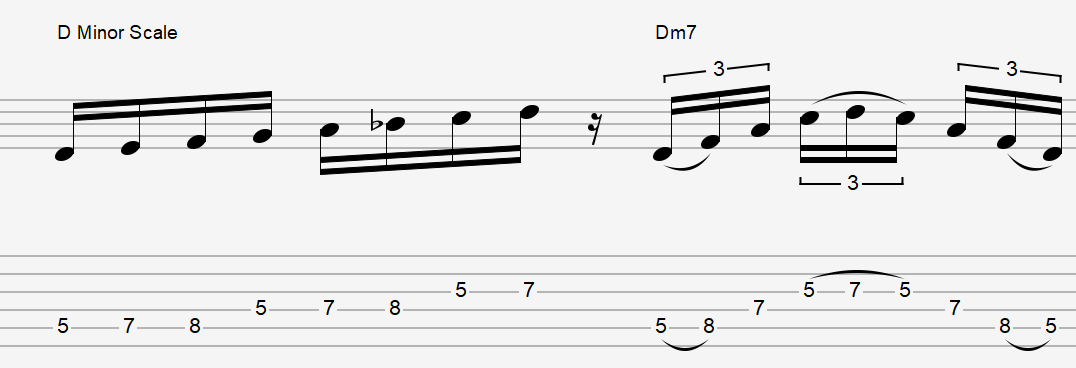How To Play Fast Lead Guitar Solos That Flow Seamlessly From One Idea To The Next
Playing fast lead guitar solos is awesome, but mostly when it sounds musically expressive and feels amazing.
This happens when your guitar phrases flow smoothly from one idea to the next…
Something many guitarists are unable to do.
Fortunately, this skill is easily practice and mastered.
In fact, there are tons of fun ways to work on this.
Ready to learn some?
Great!
Here are five ways to make your guitar solos flow smoothly from phrase to phrase:
Train Yourself To Think Ahead While Soloing
Most guitar players are flying by the edge of their seat – they only think of what to play next in their guitar solos are soon as they’ve played the last note in a phrase or pattern.
If you do this right now, it’s time to make a change.
The better you get at thinking about what you want to play in advance, the easier it becomes to play fast guitar solos that flow from one great idea to the next.
Learn how to eliminate awkward pauses in your guitar solos by learning to think ahead as described in this video:
Practice Improvising Guitar Lick Variations
Playing fast lead guitar solos with creative phrases takes practice like any other skill. However, it doesn’t happen by simply practicing scales or arpeggios over and over.
Instead, you need to work on the skill of squeezing expression out of your notes, licks and phrases.
What’s one way to do this?
Using guitar lick variation practice.
Try this:
1. Think of or create a short guitar lick. 3-4 notes is all you need.
2.
For 1 minute, focus on creating as many
variations of this lick as you can while using string bending during each
variation. Try to squeeze as much expressive power from the notes of the lick
as possible without adding many other notes.
3.
For 1 minute, repeat the previous step while
focusing on using different types of vibrato.
4.
For 1 minute, repeat the previous step while
focusing on slides.
5.
For 1 minute, repeat the previous step while
focusing on tremolo picking.
6. For 1 minute, repeat the previous step while freely using any technique.
As you can see, this is a simple exercise, but it helps you massively when it comes to improving your phrasing.
Additionally, it’s much easier to play with speed without making mistakes while focusing on just a few notes.
Over time, expand the exercise to include more notes and use different fretboard patterns. The sky is limit for this type of phrasing practice!
Learn How Different Notes Feel Different Over Different Chords
Getting an understanding of how different notes feel over different chords gives you an expressive vocabulary for soloing.
Having this skill makes it much easier to quickly decide on which notes you want to end a lick on, which ones you want to hold longer or which ones you want to string together in a flashy technical run.
It all begins by being able to identify the emotional qualities of different notes (or just “how tense or relaxed they feel”).
Get Better At Fretboard Visualization
The easier it is for you to move from one pattern to the next on the fretboard (without thinking twice), the more effortless it is to play fast guitar solos.
How do you memorize the fretboard?
Learn how different scale patterns and arpeggios connect together.
Here’s a couple of ways to get started:
1. Learn Mode Patterns And How They Combine Together
Modes are simply scales that start from/are centered around a different note than the root of the scale.
For example:
A Major = A B C# D E F# G#
If we start from B instead of A, we have B Dorian:
B C# D E F# G# A
Notice how the notes are exactly the same, only you center your focus around the second note of the scale instead of the first.
On the fretboard, this allows you to expand from one area of the guitar all the way across the neck.
Here is an example of 3 modes in close proximity:

Practice learning these modes and moving back and forth between their patterns and you’ll soon be playing all over the fretboard with ease!
2. Find Arpeggio Patterns With Scales To Make It Easy To Combine Them Together

Invest time during guitar practice into finding different arpeggios within scale patterns to fill in your fretboard vision and make your soloing flow more seamlessly.
Practicing Guitar Phrasing With Everything You Learn
Practicing phrasing is one of the most fun things to do on guitar. Good news is, you can practice this with everything.
Remember: the goal of learning things like scales or techniques or music theory is to learn how to use them to create music.
Here are some examples of how you can practice various things on guitar in a musical manner to make soloing more effortless:
·
Practice scales by improvising with the notes in
addition to simply playing through the patterns like normal.
·
Practice combining arpeggios with scales until
your solo no longer sounds like “arpeggios and scales”… it just sounds like
“music.”
· Practice playing chords in progressions, by combining them with scale runs and by improvising with them using different rhythms.
Working on the things discussed in this article really goes a long way to help you play better guitar solos with speed and expression.
Want to learn more ways to play emotionally powerful solos?
